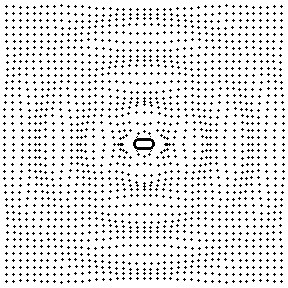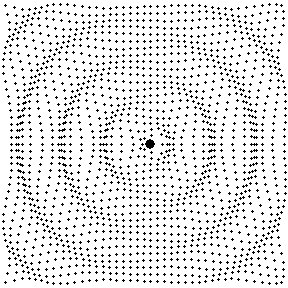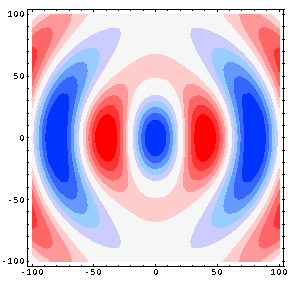Figure 3: Sound field radiated by a cylinder whose radius oscillates according to 
 |
Exerpt from the text of the paper..... Here'sanother viewof this sound field with a denser spacing of grid points and a larger amplitude grid motion but without the source motion. |
Figure 7: Contour plot of the pressure field produced by a longitudinal quadrupole
|
Redrespresentshighpressure andBluerepresentslowpressure.
|
Exerpt from the text of the paper..... The contour plot represents a 100 cm x 100 cm region with the source at the center of the plot; the two dipoles comprising the quadrupole , and representing the fork tines, are at ?? cm. The animation is thus able to show both the near-field and far-field behavior of the pressure field. The wavelength is 80.5 cm, corresponding to a frequency of 426 Hz (the speed of sound is taken to be 343 m/s). The contour plot (animation) shows both the near-field and far-field behavior of the pressure field......The transition from near-field to far-field is the result of a transition from pathlength dependentamplitudedifferences to pathlength dependent phase differences. Consider the tuning fork as a linear quadrupole arrangement of four point sources. When the observer location is very close to the center of the fork, along a vertical orientation, the distance to the inner pair of (negative) sources is smaller than that to the outer (positive) pair. Since the pressure from a point source decreases as 1/rthe pressure amplitude from the closer inner pair of sources dominates the near-field and a significant negative pressure is observed perpendicular to the source alignment. As one moves in the vertical direction away from the sources, the pathlength differences to each source become negligible and the phase differences dominate. Since there are an equal number of positive and negative sources, the pressures effectively cancel and there is very little resultant vertically propagating wave motion in the far-field. |
- V. W. Sparrow, J. L. Rochat, and B. A. Bard, "The use of color in the scientific visualization of acoustical phenomena," J. Comp. Acoust. 4(2), 202-223 (1996)
Figure 12: Sound field produced by a dipole source
 |
Exerpt from the text of the paper..... Circular wave fronts with opposite phase are propagated left and right as the sphere moves back and forth in the horizontal direction. Fluid directly above and below the sphere sloshes back and forth as the sphere oscillates, but there is no wave propagation along the vertical axis of the figure. |
(From Acoustics and Vibration Animations - Dan Russell, Kettering University)



